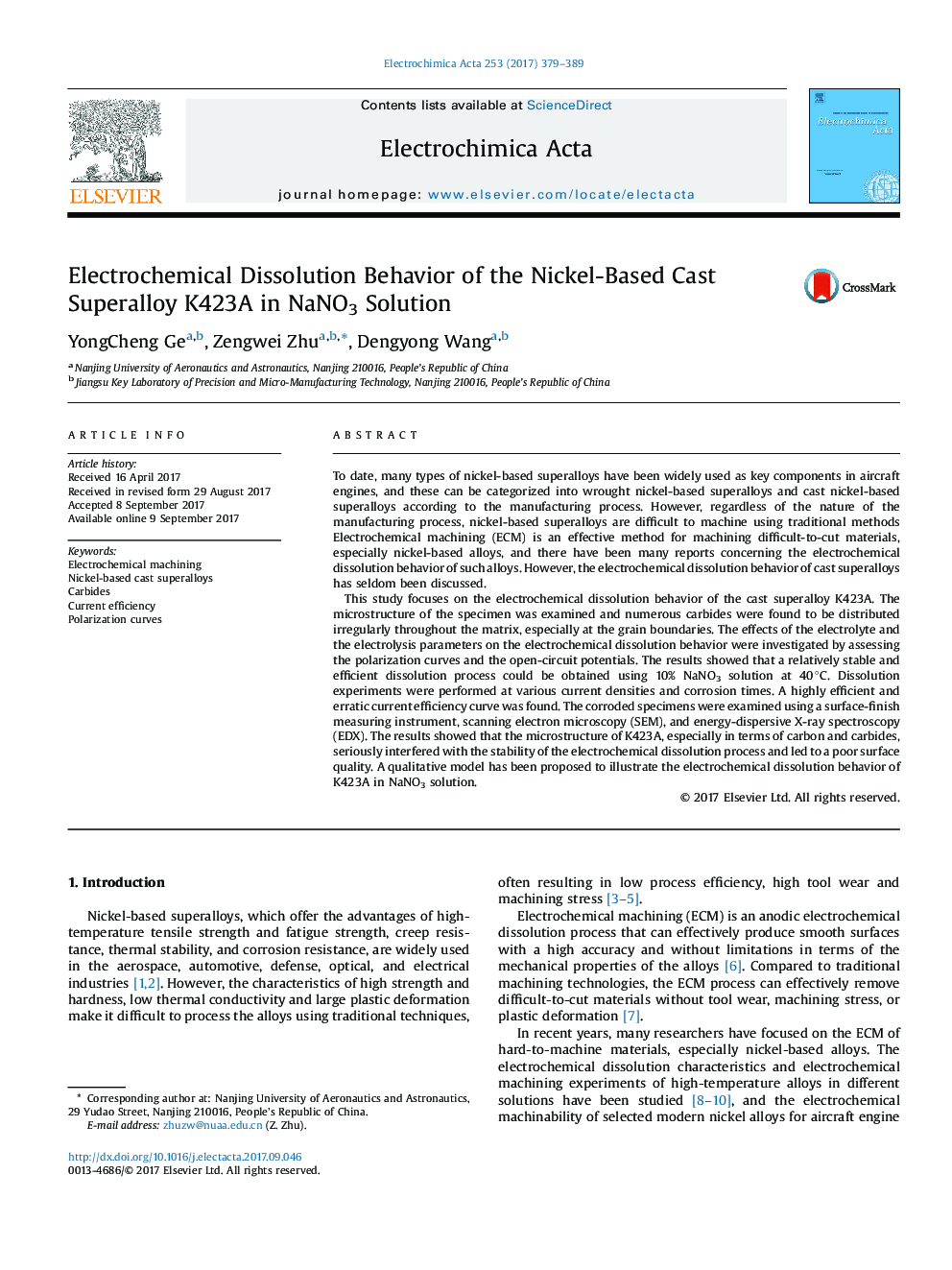| کد مقاله | کد نشریه | سال انتشار | مقاله انگلیسی | نسخه تمام متن |
|---|---|---|---|---|
| 6470137 | 1424104 | 2017 | 11 صفحه PDF | دانلود رایگان |

To date, many types of nickel-based superalloys have been widely used as key components in aircraft engines, and these can be categorized into wrought nickel-based superalloys and cast nickel-based superalloys according to the manufacturing process. However, regardless of the nature of the manufacturing process, nickel-based superalloys are difficult to machine using traditional methods Electrochemical machining (ECM) is an effective method for machining difficult-to-cut materials, especially nickel-based alloys, and there have been many reports concerning the electrochemical dissolution behavior of such alloys. However, the electrochemical dissolution behavior of cast superalloys has seldom been discussed.This study focuses on the electrochemical dissolution behavior of the cast superalloy K423A. The microstructure of the specimen was examined and numerous carbides were found to be distributed irregularly throughout the matrix, especially at the grain boundaries. The effects of the electrolyte and the electrolysis parameters on the electrochemical dissolution behavior were investigated by assessing the polarization curves and the open-circuit potentials. The results showed that a relatively stable and efficient dissolution process could be obtained using 10% NaNO3 solution at 40 °C. Dissolution experiments were performed at various current densities and corrosion times. A highly efficient and erratic current efficiency curve was found. The corroded specimens were examined using a surface-finish measuring instrument, scanning electron microscopy (SEM), and energy-dispersive X-ray spectroscopy (EDX). The results showed that the microstructure of K423A, especially in terms of carbon and carbides, seriously interfered with the stability of the electrochemical dissolution process and led to a poor surface quality. A qualitative model has been proposed to illustrate the electrochemical dissolution behavior of K423A in NaNO3 solution.
Journal: Electrochimica Acta - Volume 253, 1 November 2017, Pages 379-389